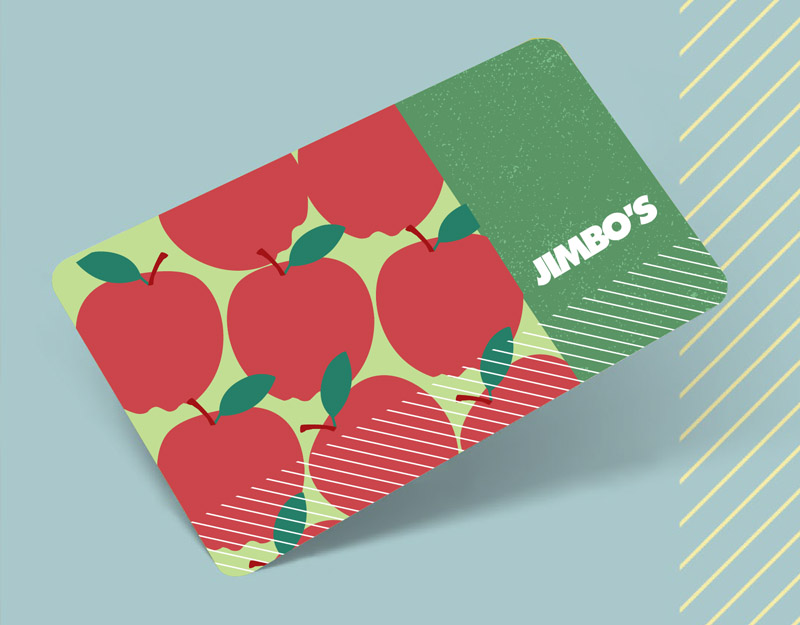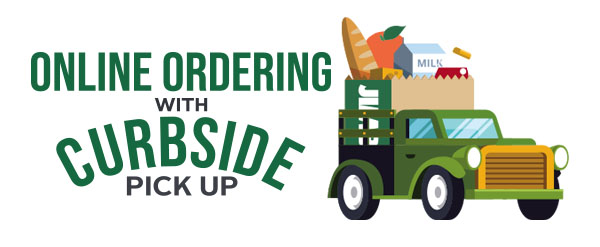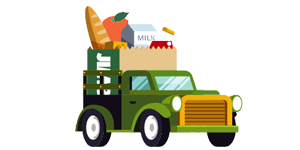We continue to take the necessary precautions to ensure the safety and well-being of our customers and staff during COVID-19. Learn more.
F.A.Q.
Frequently Asked Questions
How does Jimbo's support a sustainable food system?
Our support of local vendors and organic farms contributes to a healthier environment. Eating local and organic helps us avoid the negative effects of conventional farming and reduces emissions from food miles (food miles = emissions from transporting food from where it’s grown to where it’s sold).
We also offer over 130 Regenerative Organic Certified products, which support soil health and contribute to a more sustainable future.
Look for the Support San Diego and Regenerative Organic Certified (ROC) tags on our shelves, and be part of the solution… Who knew being green could taste sooo good!
Click here [link sustainable sourcing webpage] to learn more about how we source our products sustainably.
What can be recycled and composted at Jimbo’s?
Recycle :

Clean and dry rigid plastics

Glass

Metal

Paper and cardboard
Don’t Recycle :

Food/liquid residue

Flimsy plastic/plastic bags
Compost:

Food scraps (peels, pits, cooked meat and bones, prepared foods)

Paper based packaging

Food-soiled napkins and paper towels
Don’t Compost:

Bioplastic or biobags (if it’s clear, it goes in the trash!)

Recyclables
Trash:

Gloves

Snack wrappers

Flimsy plastic

Bioplastic
Don’t Trash:

Food

Recyclables
Recycling requirements can depend on where you live, so always check with your local waste hauler!
Why does my produce wilt or dry out in your compostable bags?
Hamlet asks “To be, or not to be”… but for fruits and veggies, we ask “Will you wilt or rot?” That is the question (to determine how to keep your produce fresh).
Oftentimes, the best packaging for produce is no packaging at all. The Biobags or paper totes provided in our produce departments are a great option for transport. Whenever possible, REDUCE single use bags altogether and let your produce go naked. We always recommend washing produce (even organic!) before consumption, and there are reusable produce bags for sale in our produce department if you prefer!
Leafy greens and herbs in the ‘wilt’ category need a high humidity environment to stay crisp. Biobags are designed to be breathable and will not hold the moisture these items need. Store delicate produce in a damp cloth in the crisper drawer or bouquet style in a cup of water in the fridge! More tips like this can be found at savethefood.com/storage.
Oftentimes, the best packaging for produce is no packaging at all. The Biobags or paper totes provided in our produce departments are a great option for transport. Whenever possible, REDUCE single use bags altogether and let your produce go naked. We always recommend washing produce (even organic!) before consumption, and there are reusable produce bags for sale in our produce department if you prefer!
Leafy greens and herbs in the ‘wilt’ category need a high humidity environment to stay crisp. Biobags are designed to be breathable and will not hold the moisture these items need. Store delicate produce in a damp cloth in the crisper drawer or bouquet style in a cup of water in the fridge! More tips like this can be found at savethefood.com/storage.
Why can’t we reuse our glass juice bottles?
You can! Just not at Jimbo’s… yet. Use them to store bulk items like seeds and nuts or make your own smoothies, juices and nut milk to fill them with!
Why isn’t there more compostable packaging available at Jimbo’s?
When it comes to packaging, the best option is the one you will use again and again. Regardless of whether it is made of plastic, metal, cotton, or corn!
We consider the full life cycle of our packaging choices and strive to strike a balance between practicality and efficacy when considering any ‘ecofriendly’ alternatives. To reduce the impact of any and all packaging: Rethink, Reduce, and Reuse as much as possible!
We consider the full life cycle of our packaging choices and strive to strike a balance between practicality and efficacy when considering any ‘ecofriendly’ alternatives. To reduce the impact of any and all packaging: Rethink, Reduce, and Reuse as much as possible!
Why did you choose to make the water aisle plastic-free before any other departments?
Because the plastic in our oceans comes from many sources, illustrated here by NOAA, there are many solution steps to take. Our community is lucky enough to have sources of plastic-free, potable water so this is one place we felt we could compromise without sacrifice. Yes, single-use plastics still dominate the packaged food world, but small changes still make a significant impact!
As of 2025, all of our self-serve packaging items are either compostable or recyclable, and we’re making more and more progress every day!
As of 2025, all of our self-serve packaging items are either compostable or recyclable, and we’re making more and more progress every day!






